Top Airlines Offering Inflight WiFi Services on Flights from New York
Explore top airlines' inflight WiFi from New York. Stay connected with our guide on services, how to connect, and future trends in inflight technology.

In the present hyper-associated world, the accessibility of WiFi administrations has turned into a fundamental element for explorers. With New York being one of the most active travel centers worldwide, giving consistent availability in the air is fundamental for some carriers. Inflight WiFi administrations permit travelers to remain associated with their work, speak with friends and family, and access amusement during their flights. Lets see inflight WiFi administrations presented by top carriers working out of New York, giving a thorough aide on what every aircraft offers, how to interface, and extra highlights.
Table of Content
What is Wi-Fi?
History and Development of Wi-Fi Standards
History and Evolution of Inflight Wi-Fi
Importance of Inflight WiFi
Overview of New York Airports
Inflight WiFi Providers
Additional Considerations for Inflight WiFi
How Inflight Wi-Fi Works
The Evolution of Inflight Wi-Fi: Keeping Passengers Connected at 35,000 Feet
Technological Underpinnings
Types of Inflight Wi-Fi Systems
Benefits of Inflight Wi-Fi
How to Connect to Inflight WiFi: Step by Step Guide
Example Instructions for Specific Airlines
Challenges and Limitations of Inflight Wi-Fi
Security and Privacy Considerations
Comparative Analysis of Airlines
Future Trends in Inflight Connectivity
Impact of Inflight Wi-Fi on Passenger Experience
Regulatory and Policy Considerations
Conclusion
What is Wi-Fi?
Wi-Fi is a remote systems administration innovation that utilizations radio waves to give fast web and organization associations. It works by sending information by means of electromagnetic waves, which are gotten by gadgets outfitted with Wi-Fi capacities. The center parts of a Wi-Fi network incorporate a switch, which goes about as the focal center, and different gadgets like cell phones, workstations, and brilliant home devices that interface with it. Wi-Fi organizations can be sorted into various kinds: public (open organizations in bistros or air terminals), private (got home or office organizations), network organizations (frameworks with numerous hubs to broaden inclusion), and impromptu organizations (shared associations without a focal switch). This innovation has become universal, supporting different applications from basic web perusing to complex IoT biological systems.
History and Development of Wi-Fi Standards
The advancement of Wi-Fi innovation is an account of constant development and improvement. The excursion started with the foundation of the IEEE 802.11 norm in 1997, which gave the establishment to remote systems administration. The first 802.11 standard offered information paces of up to 2 Mbps, which was noteworthy at that point. Throughout the long term, ensuing cycles have decisively sped up and presented new elements. The development incorporates remarkable achievements like 802.11b (11 Mbps), 802.11g (54 Mbps), 802.11n (600 Mbps), 802.11ac (1 Gbps+), and the most recent 802.11ax, otherwise called Wi-Fi 6, which commitments considerably higher velocities, lower dormancy, and better execution in thick conditions. Every age acquired improvements security, reach, and productivity, setting Wi-Fi's job in the advanced world.
History and Evolution of Inflight Wi-Fi
The idea of inflight Wi-Fi has progressed significantly since its initiation. Giving web network on planes was first investigated in the mid 2000s. At first, the accessible innovation was simple, depending on air-to-ground (ATG) associations that offered restricted data transfer capacity and slow rates. These early endeavors were tormented by specialized and administrative difficulties, bringing about a problematic and expensive help.
The genuine forward leap in inflight Wi-Fi accompanied the advancement of satellite-based correspondence frameworks. The send off of satellites explicitly intended to give web availability empowered carriers to offer more solid and quicker Wi-Fi administrations. Organizations like Association by Boeing were among the trailblazers, sending off a help in the mid 2000s that, in spite of its true capacity, confronted monetary troubles and was ultimately ended in 2006.
The next significant leap occurred with the entry of Gogo Inflight Internet, which initially used a network of cell towers to provide ATG Wi-Fi. This technology was more efficient than earlier attempts and gained popularity, especially on domestic flights in the United States. However, the limited bandwidth and coverage of ATG systems prompted the industry to seek more robust solutions.
The reception of Ku-band and Ka-band satellite innovation denoted a vital second in the development of inflight Wi-Fi. These groups took into account higher information rates and better inclusion, fundamentally further developing the client experience. Organizations like Viasat, Inmarsat, and Panasonic Flying became central participants, giving satellite-based inflight Wi-Fi to different carriers around the world.
As of the last part of the 2010s and mid 2020s, inflight Wi-Fi innovation keeps on advancing, with aircrafts progressively incorporating high-throughput satellites (HTS) to offer velocities practically identical to ground-based broadband administrations. The improvement of low Earth circle (LEO) satellite heavenly bodies, for example, SpaceX's Starlink, guarantees even lower idleness and higher paces, proclaiming another time for inflight network.
Importance of Inflight WiFi
Inflight WiFi has changed air travel, changing extended periods overhead into useful or engaging encounters. For business voyagers, the capacity to send messages, direct virtual gatherings, and access cloud administrations is significant. For recreation explorers, remaining associated with loved ones, streaming motion pictures, and perusing web-based entertainment can make flights more charming.
Inflight WiFi innovation depends on either ground-based pinnacles or satellites to give web network. Ground-based frameworks are commonly utilized for homegrown flights, while satellite frameworks are important for global flights. These frameworks take into consideration ceaseless web access, though with shifting velocities and unwavering quality relying upon the supplier and innovation utilized.
The interest for inflight WiFi keeps on developing, with additional carriers putting resources into updating their administrations to meet traveler assumptions. Fast web is at this point not an extravagance yet a need for some voyagers, making it a basic cutthroat element for carriers.
Overview of New York Airports
New York is served by three significant air terminals: John F. Kennedy Global Air terminal (JFK), LaGuardia Air terminal (LGA), and Newark Freedom Worldwide Air terminal (EWR). Every one of these air terminals is a critical center for homegrown and global travel, taking care of millions of travelers yearly.
JFK is the most active of the three, dealing with various global flights. It is a significant center for American Carriers and Delta Aircrafts. LaGuardia essentially serves homegrown flights and is known for its closeness to Manhattan. Newark, albeit situated in New Jersey, is viewed as one of New York's significant air terminals and is a vital center point for Joined Carriers.
These air terminals are outfitted with present day conveniences, remembering WiFi administrations for terminals and parlors. The accessibility of inflight WiFi on flights leaving from these air terminals differs via carrier, with most significant transporters offering some type of availability.
Inflight WiFi Providers
In today's interconnected world, staying online while traveling is more important than ever. Whether for work or leisure, having reliable WiFi access during flights can significantly enhance the travel experience. Lets compare the various inflight WiFi services offered by major airlines and providers, detailing their features, costs, and availability. We will cover WiFi services provided by Spectrum, Verizon, Xfinity, Delta, American Airlines, Spirit Airlines, Alaska Airlines, Amtrak, JetBlue, and more.

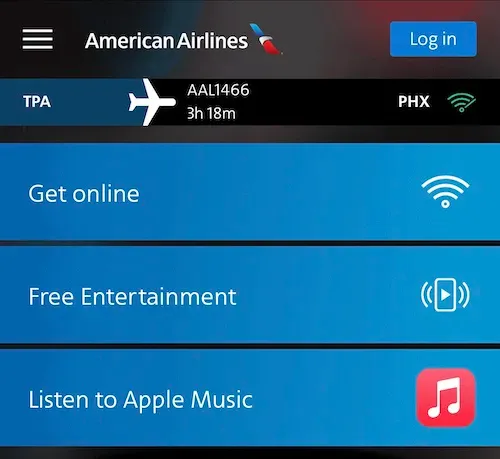
American Airlines Inflight WiFi (AA WiFi)
Provider: American Airlines
Service: American Airlines offers WiFi on nearly all of its domestic and international flights. The service is provided through Gogo, Viasat, or Panasonic, depending on the aircraft.
Features: Passengers can browse the internet, check emails, and stream video.
Cost: Prices vary, but typically range from $10 for a single flight pass to monthly subscriptions for frequent flyers.
Availability: Available on most American Airlines flights, both domestic and international.
Website: American Airlines
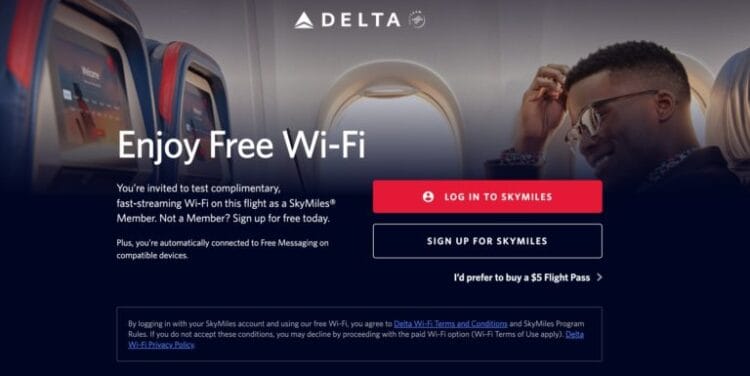
Delta Air Lines WiFi (Delta Free WiFi, Delta WiFi Connect)
Provider: Delta Air Lines
Service: Delta offers WiFi on almost all of its flights through Gogo and Viasat.
Features: High-speed internet access, allowing for browsing, email, and streaming. Delta also offers free messaging on platforms like iMessage, WhatsApp, and Facebook Messenger.
Cost: Varies by flight, with passes available for purchase. Delta is also rolling out free WiFi on many domestic flights.
Availability: Available on most Delta flights, including domestic and international routes.
Website: Delta WiFi
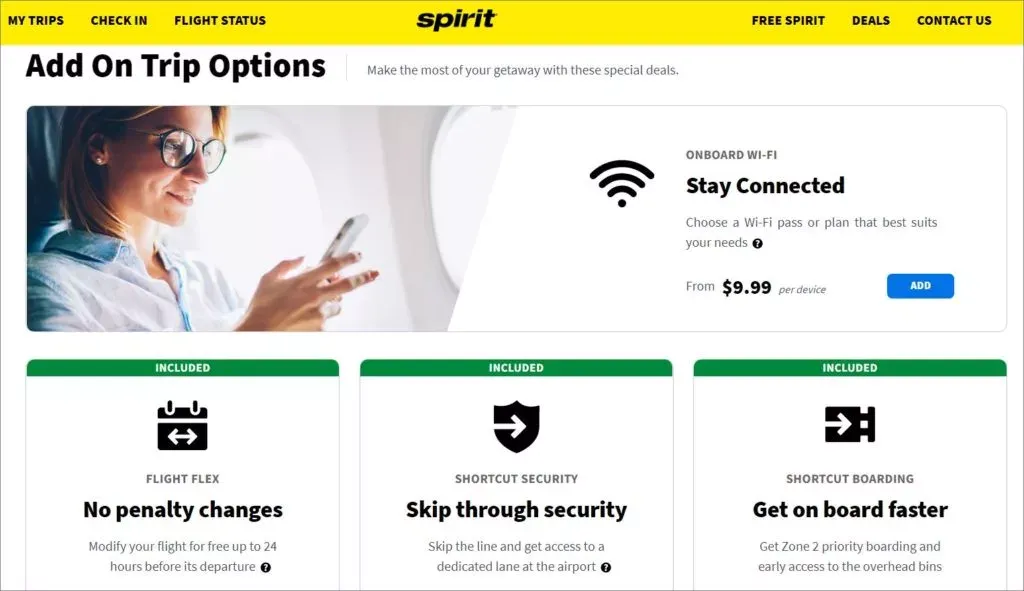
3- Spirit Airlines WiFi (Spirit WiFi)
Provider: Spirit Airlines
Service: Spirit Airlines offers inflight WiFi on most of its aircraft through Thales Group.
Features: Basic internet browsing, email access, and streaming capabilities.
Cost: Prices start at $6.50 for basic access and increase based on usage and flight duration.
Availability: Available on most Spirit Airlines flights.
Website: Spirit WiFi
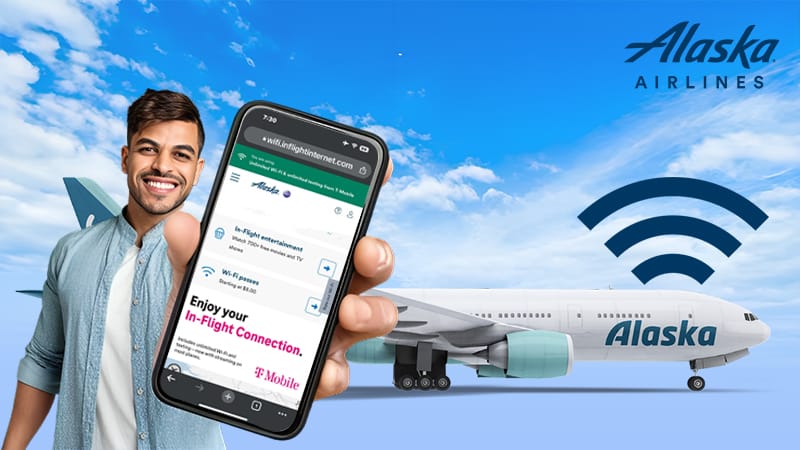
Alaska Airlines WiFi (Alaska WiFi)
Provider: Alaska Airlines
Service: Alaska Airlines provides WiFi on most of its flights through Gogo and Viasat.
Features: High-speed internet, allowing for web browsing, email, and streaming services.
Cost: Prices typically start at $8 per flight, with monthly plans available for frequent travelers.
Availability: Available on most Alaska Airlines flights, both domestic and international.
Website: Alaska WiFi
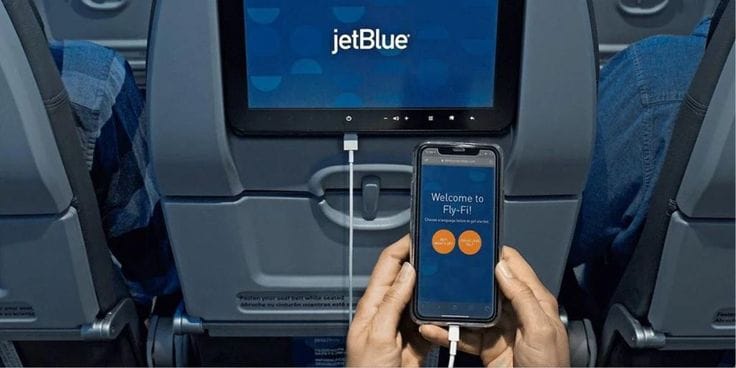
JetBlue WiFi (Fly-Fi)
Provider: JetBlue Airways
Service: JetBlue offers its "Fly-Fi" service on all flights, provided through Viasat.
Features: Free high-speed internet for all passengers, with capabilities for browsing, email, and streaming.
Cost: Free for all passengers.
Availability: Available on all JetBlue flights.
Website: JetBlue Fly-Fi
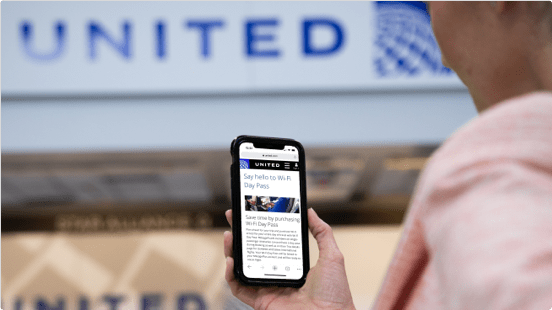
United Airlines WiFi (United Air WiFi, United Inflight WiFi)
Provider: United Airlines
Service: United offers WiFi on most of its flights, using various providers including Gogo, Panasonic, and Thales.
Features: Internet browsing, email access, and streaming capabilities.
Cost: Prices vary, with options for hourly or flight-long access. Monthly and yearly subscriptions are available for frequent flyers.
Availability: Available on most United Airlines flights, both domestic and international.
Website: United WiFi

Southwest Airlines WiFi (Southwest WiFi)
Provider: Southwest Airlines
Service: Southwest provides WiFi on most of its flights through Global Eagle.
Features: Basic internet access, including browsing and email, with limited streaming capabilities.
Cost: $8 per device for all-day access.
Availability: Available on most Southwest Airlines flights.
Website: Southwest WiFi
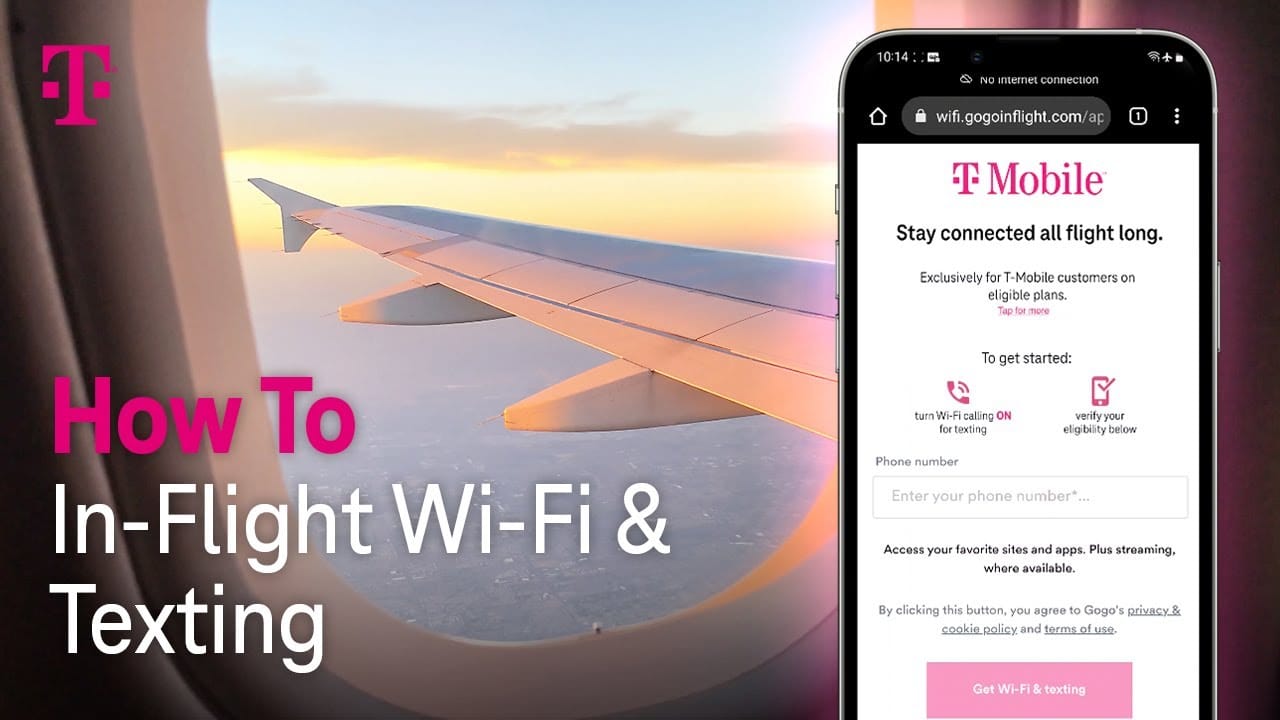
T-Mobile Inflight WiFi
Provider: T-Mobile
Service: T-Mobile offers complimentary inflight WiFi on certain airlines, including Delta, American, Alaska, and United, for its customers.
Features: Free messaging and basic internet access.
Cost: Free for T-Mobile customers.
Availability: Available on partner airline flights for T-Mobile customers.
Website: T-Mobile Inflight WiFi

Amtrak WiFi
Provider: Amtrak
Service: Amtrak provides free WiFi on most of its trains, particularly on the Northeast Corridor.
Features: Basic internet access for browsing and email, with limitations on streaming and large downloads.
Cost: Free for all passengers.
Availability: Available on most Amtrak trains, especially in the Northeast.
Website: Amtrak WiFi
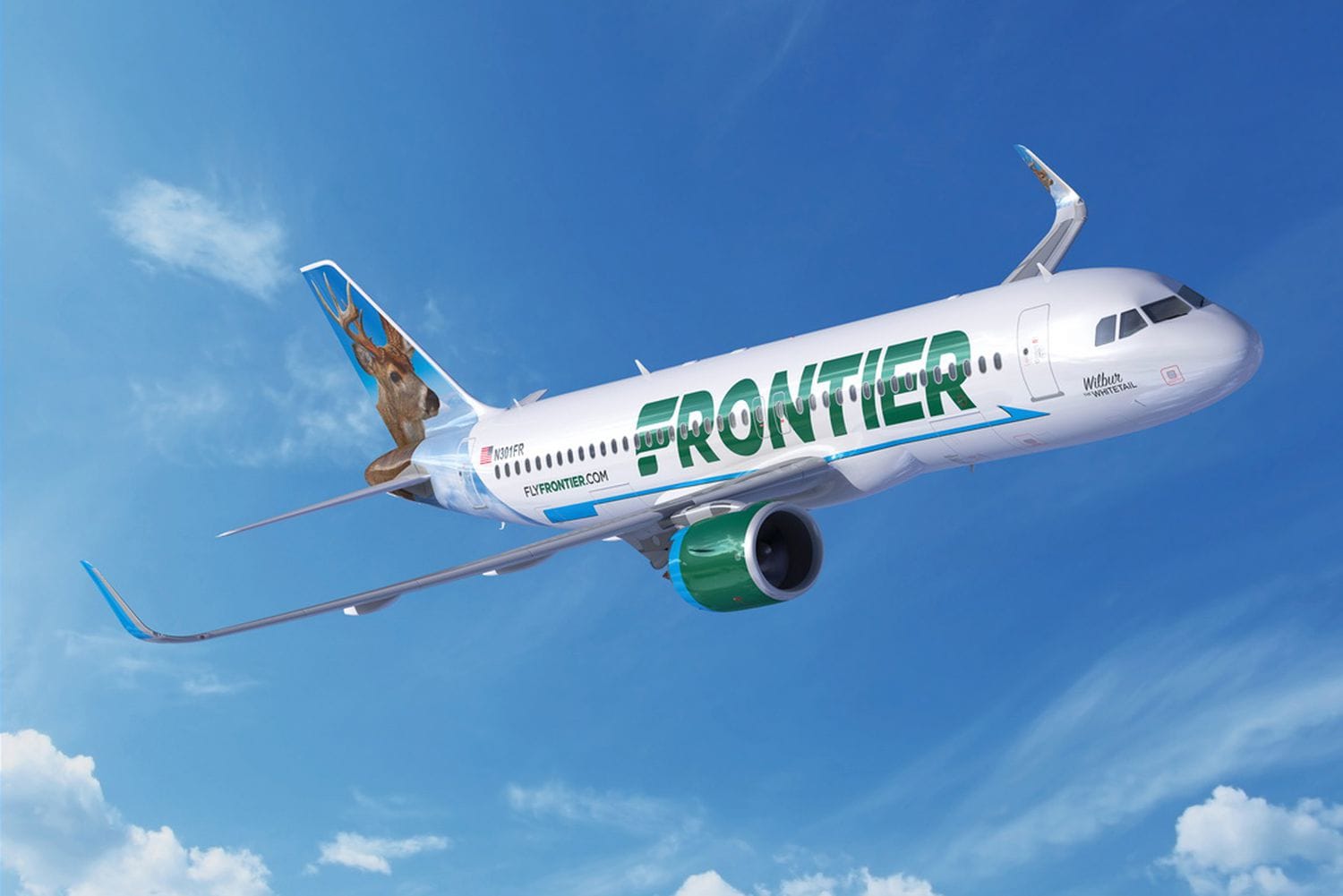
Frontier Airlines WiFi (Frontier WiFi)
Provider: Frontier Airlines
Service: Frontier has started rolling out WiFi on its fleet, aiming for complete coverage soon.
Features: Basic browsing and email access.
Cost: Pricing details are evolving as the rollout continues.
Availability: Available on select Frontier Airlines flights, with full fleet coverage expected soon.
Website: Frontier WiFi
Additional Considerations for Inflight WiFi
When choosing an inflight WiFi service, consider the following factors:
-
Coverage
Check if the WiFi service is available on your specific flight route and aircraft. -
Speed
Different providers offer varying speeds, which can affect your ability to stream content or conduct work online. -
Cost
Prices can vary significantly, from free services to hourly or monthly subscriptions. Consider your usage needs and budget. -
Device Compatibility
Ensure that the WiFi service is compatible with your devices. -
Data Limits
Some services may have data caps or limitations on streaming and large downloads.
How Inflight Wi-Fi Works
Inflight Wi-Fi technology hinges on complex systems that enable an airplane to connect to the internet while in flight. There are primarily two types of systems used: satellite-based and air-to-ground (ATG).
Satellite-Based Systems
Satellite-Based Systems
Satellite-based inflight Wi-Fi is the most common method for providing connectivity on international and long-haul flights. This system uses satellites orbiting the Earth to relay internet signals to and from the aircraft. Here's how it works:
- Satellites
High-altitude geostationary satellites or low Earth orbit satellites beam internet signals to the aircraft. - Antenna
The airplane is equipped with antennas, usually mounted on its fuselage or tail, which receive and send signals to the satellites. - Router
Inside the aircraft, the signal is directed to an onboard router, which distributes the internet connection to passengers via Wi-Fi access points throughout the cabin. - Backhaul
The data is transmitted back to ground stations via the satellites, which connect to the internet backbone.
Air-to-Ground (ATG) Systems
Air-to-Ground (ATG) Systems:
ATG systems are primarily used for domestic flights within countries like the United States. This system relies on a network of ground-based cell towers. The process involves:
-
Cell Towers
Specialized cell towers on the ground transmit internet signals upward. -
Antenna
The aircraft, equipped with antennas usually on the fuselage, receives these signals. -
Router
The signal is routed through an onboard router, distributing Wi-Fi to passengers. -
Backhaul
Data is transmitted back to the cell towers, which connect to the broader internet.
While satellite-based wifi offer broader coverage and are ideal for transoceanic flights, ATG systems provide sufficient bandwidth for domestic routes, although with more limited coverage and potentially higher latency.
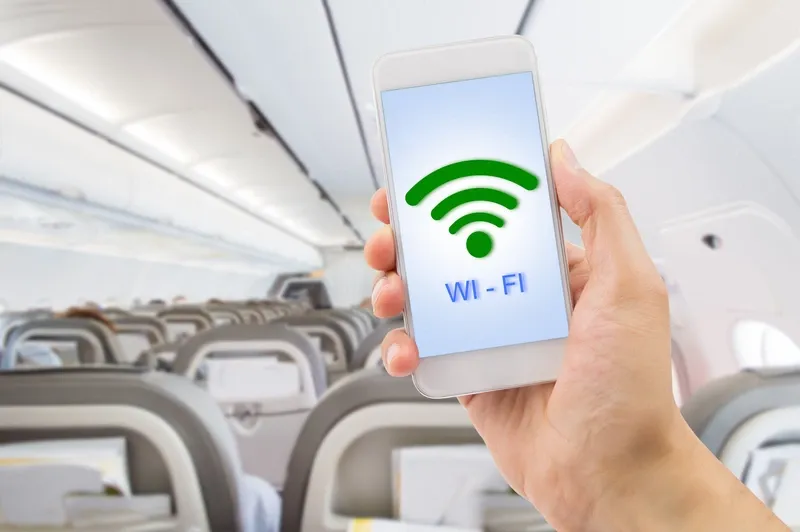
The Evolution of Inflight Wi-Fi: Keeping Passengers Connected at 35,000 Feet
Inflight Wi-Fi has reformed the air travel insight by empowering travelers to remain associated with the web while flying. This network permits explorers to stay useful, engaged, and in contact with the world even at 35,000 feet. The interest for inflight Wi-Fi has developed altogether as travelers progressively expect consistent availability likened to what they experience on the ground. Aircrafts have answered by putting resources into different advancements to give dependable web access during flights, in this way upgrading consumer loyalty and functional effectiveness.
Technology Behind In-Flight Wi-Fi
Technological Underpinnings
Technology Behind In-Flight Wi-Fi
In-flight Wi-Fi systems typically rely on two primary technologies: satellite-based systems and air-to-ground (ATG) systems.
Satellite-Based Systems
-
Overview
Satellite-based systems use satellites positioned in geostationary orbit around the Earth. These satellites relay signals between the aircraft and ground stations, providing coverage over vast geographic areas, including remote regions and oceans. -
Components
Onboard the aircraft, there are antennas that communicate with the satellites to establish and maintain the internet connection. These antennas need to be aerodynamically designed to minimize drag and interference with the aircraft's communication systems. -
Advantages
Satellite systems offer comprehensive coverage and high-speed connectivity, suitable for long-haul flights and routes that traverse areas without ground-based infrastructure.
Air-to-Ground (ATG) Systems
- Overview
ATG systems utilize ground-based cellular towers to transmit signals to and from the aircraft. This technology is akin to how mobile phones connect to cellular networks on the ground. - Deployment
Ground stations communicate with antennas installed on the underside of the aircraft, which relay signals to and from the passengers' devices. These systems are more commonly used on domestic flights where ground infrastructure can support the connectivity needs. - Limitations
ATG systems are limited to coverage over populated areas and may experience interruptions or slower speeds when flying over remote or oceanic regions.
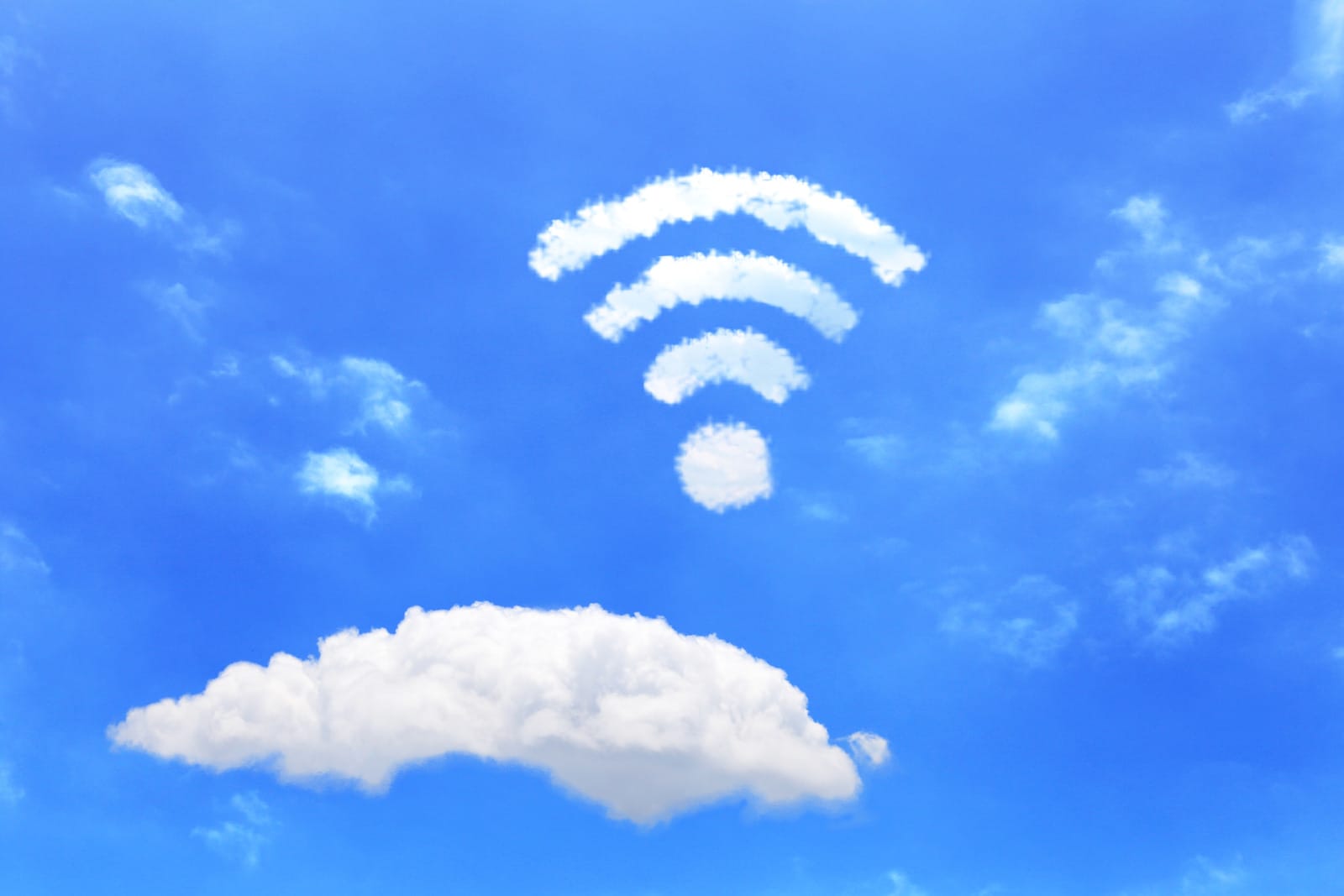
Technical Innovations in Inflight WiFi
Advancements in Antenna Technology
The development of next-generation antennas has significantly impacted the performance and reliability of inflight WiFi. Modern antennas, such as phased-array and electronically steerable antennas, have revolutionized how airlines provide internet connectivity to passengers.
Phased-Array Antennas
Phased-array antennas consist of multiple small antennas working together to direct the beam electronically without moving parts. This technology allows for more precise and stable connections with satellites or ground stations. The benefits include:
- Higher Data Rates: Improved signal directionality increases data throughput.
- Reduced Latency: Better signal focus minimizes delays.
- Enhanced Coverage: Antennas can dynamically adjust to maintain optimal connectivity.
Electronically Steerable Antennas (ESAs)
ESAs offer flexibility by electronically adjusting the direction of the antenna beam. These antennas provide several advantages:
- Smaller Size: More compact design fits better on aircraft.
- Lower Power Consumption: Efficient operation reduces energy use.
- Quick Adaptation: Rapidly adjusts to changing conditions and maintains a stable connection.
Role of Artificial Intelligence in Optimizing Inflight WiFi
Artificial Intelligence (AI) and machine learning (ML) are transforming inflight WiFi by enhancing network management and improving the passenger experience.
AI in Network Management
AI algorithms analyze vast amounts of data to optimize network performance. Key applications include:
- Predictive Maintenance: AI predicts potential hardware failures and schedules maintenance to prevent outages.
- Dynamic Bandwidth Allocation: AI allocates bandwidth based on real-time demand, ensuring consistent performance.
- Traffic Management: AI identifies and prioritizes critical data, reducing congestion and enhancing user experience.
AI in Passenger Experience
AI enhances passenger satisfaction through personalized services:
- Content Recommendation: AI suggests entertainment options based on passenger preferences.
- Customer Support: AI-powered chatbots provide real-time assistance to passengers facing connectivity issues.
- Usage Analytics: AI analyzes usage patterns to tailor WiFi packages and improve service offerings.
Benefits of Inflight Wi-Fi
Enhanced Passenger Experience
Inflight Wi-Fi enhances the passenger experience by allowing travelers to remain productive during flights. Business travelers can respond to emails, participate in video conferences, and work on documents without interruption. Similarly, leisure travelers can stream movies, access social media, and browse the web to pass the time more enjoyably.
Operational Benefits for Airlines
For airlines, inflight Wi-Fi offers operational benefits beyond passenger satisfaction. Real-time connectivity enables cabin crew to communicate effectively with ground staff, improving onboard service and operational efficiency. Airlines can also generate additional revenue through paid Wi-Fi plans, offering different tiers of service based on internet speed and data usage.
How to Connect to Inflight WiFi: Step by Step Guide
Connecting to inflight WiFi can vary slightly depending on the airline and the service provider, but here is a general step-by-step guide that should work for most flights:
Step 1: Enable Airplane Mode
- Enable Airplane Mode: Before the flight takes off, enable airplane mode on your device. This disables your cellular network to comply with aviation regulations.
- iOS: Swipe down from the top right corner (iPhone X and later) or swipe up from the bottom (iPhone 8 and earlier) to access the Control Center, then tap the airplane icon.
- Android: Swipe down from the top of the screen to access the quick settings menu, then tap the airplane icon.
Step 2: Enable WiFi
- Turn on WiFi: While still in airplane mode, turn on your device’s WiFi.
- iOS: Go to Settings > WiFi and toggle it on.
- Android: Swipe down from the top of the screen, tap the WiFi icon to enable it, or go to Settings > Network & Internet > WiFi.
Step 3: Connect to the Inflight WiFi Network
- Find and Connect to the Network: Your device will scan for available networks. Look for the inflight WiFi network. It usually has the airline’s name or the WiFi provider’s name.
Select the network to connect. It may be named something like "DeltaWiFi," "gogoinflight," or "AA-Inflight."
Step 4: Launch Your Web Browser
- Open Your Web Browser: Once connected to the network, open your web browser (such as Safari, Chrome, or Firefox).
Step 5: Access the WiFi Portal
- Go to the WiFi Portal: The WiFi portal should automatically load. If it doesn’t, type in a generic web address like "wifi.com" or "airlinewifi.com" to be redirected to the login page.
Step 6: Select Your WiFi Package
- Choose Your WiFi Package: You will be presented with different WiFi packages or plans. Options may include free messaging, basic browsing, or premium streaming.
- Free Services: Some airlines offer free basic WiFi for messaging apps (iMessage, WhatsApp, etc.).
- Paid Services: Choose a package that fits your needs. Prices typically vary based on duration and usage.
Step 7: Log In or Create an Account
- Log In or Register: If you have an existing account with the WiFi provider, log in using your credentials. If not, you may need to create an account. Some airlines allow guest access without registration.
Step 8: Payment (if applicable)
- Complete Payment: If you selected a paid package, follow the prompts to enter your payment information. Accepted forms of payment usually include credit/debit cards and sometimes PayPal or airline rewards points.
Step 9: Start Browsing
- Connect and Browse: Once payment is confirmed, you should be connected to the internet. You can now browse the web, check emails, stream videos, or use social media.
Step 10: Troubleshooting (if needed)
- Troubleshoot Connection Issues: If you experience issues:
- Reconnect to the Network: Try disconnecting and reconnecting to the WiFi network.
- Restart Your Device: A simple restart can sometimes resolve connection problems.
- Ask for Assistance: If problems persist, ask the flight attendants for assistance. They may be able to provide tips or check if there’s a broader issue with the inflight
Example Instructions for Specific Airlines
American Airlines
- Connect to "AA-Inflight".
- Open browser and go to "aainflight.com."
- Choose your WiFi package and log in or create an account.
Delta Air Lines
- Connect to "DeltaWiFi."
- Open browser and the portal should load automatically.
- Choose your package. Free messaging is available.
JetBlue
- Connect to "Fly-Fi."
- Open browser and the Fly-Fi portal should appear.
- Enjoy free high-speed WiFi.
Southwest Airlines
- Connect to "SouthwestWiFi."
- Open browser and go to "southwestwifi.com."
- Pay $8 for all-day access.

Challenges and Limitations of Inflight Wi-Fi
Despite significant advancements, inflight Wi-Fi still faces numerous challenges and limitations. These issues stem from technical, logistical, and regulatory hurdles that impact the quality and consistency of the service.
Technical Challenges
- Bandwidth Limitations
Providing high-speed internet to hundreds of passengers simultaneously is a significant challenge. The limited bandwidth available through satellite connections often leads to congestion, resulting in slower speeds during peak usage times. - Latency
Satellite-based systems, particularly those using geostationary satellites, suffer from high latency due to the long distance signals must travel. This can affect the performance of real-time applications like video conferencing and online gaming. - Coverage Gaps
While satellite systems offer broad coverage, there can still be gaps, especially in remote or polar regions where connectivity is harder to maintain.
Logistical Challenges:
-
Installation and Maintenance
Installing and maintaining the necessary hardware on aircraft is complex and expensive. It requires significant investment in terms of both money and time, which can be a barrier for airlines. -
Weight and Aerodynamics
Adding antennas and other equipment to aircraft affects their weight and aerodynamics, potentially impacting fuel efficiency and operational costs.
Regulatory Challenges: -
Frequency Allocation
The use of specific frequency bands for inflight Wi-Fi must comply with international regulations. Different countries have varying rules regarding spectrum allocation, which can complicate global operations. -
Security and Privacy
Ensuring secure and private connections is critical, particularly given the increasing prevalence of cyber threats. Providers must adhere to stringent security protocols to protect passenger data.
Security and Privacy Considerations
- Security Measures
Ensuring the security of inflight Wi-Fi networks is crucial to protect passenger data and prevent unauthorized access. Encryption standards such as WPA2 (Wi-Fi Protected Access 2) are commonly used to secure wireless connections, encrypting data transmitted between devices and the aircraft's onboard server. - Privacy Concerns
Despite security measures, privacy concerns persist regarding data collection and user tracking. Airlines must transparently communicate their data collection practices and obtain passenger consent for using inflight Wi-Fi services. Clear privacy policies and robust data protection measures are essential to build trust among passengers.
Comparative Analysis of Airlines
Availability and Quality of Service
The availability and quality of inflight Wi-Fi vary among airlines, influenced by factors such as fleet age, route networks, and investment in technology. Leading airlines prioritize comprehensive coverage and reliable service, often offering different pricing models to cater to diverse passenger needs and expectations.
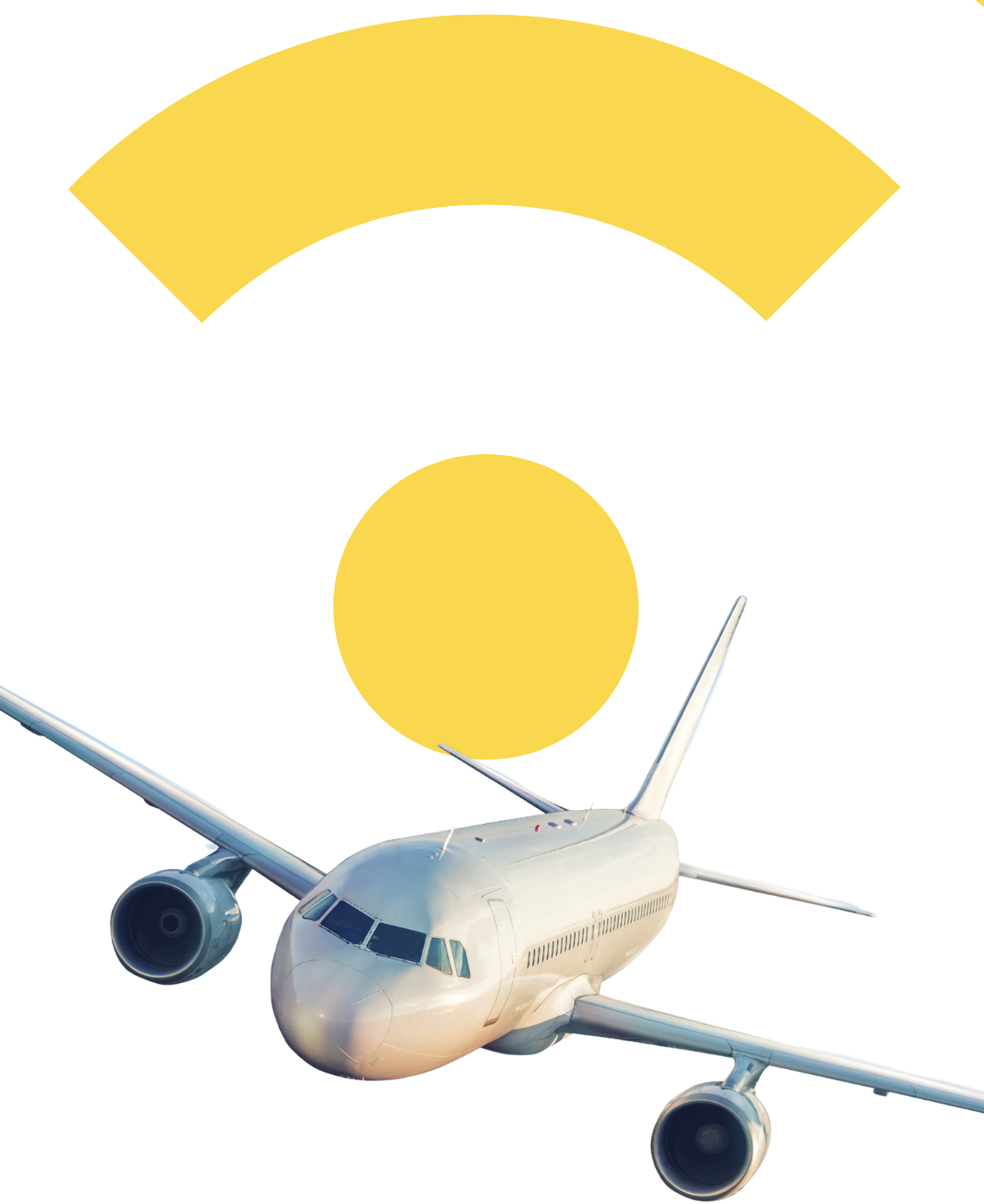
Future Trends in Inflight Connectivity
Technological Advancements
The future of inflight connectivity is poised for significant advancements, including integration with 5G networks and the adoption of next-generation satellite technologies. These innovations promise faster internet speeds, lower latency, and enhanced reliability, transforming the inflight experience for passengers and enabling new onboard services.
Potential Impact on Air Travel
Advancements in inflight connectivity are expected to reshape air travel by raising passenger expectations and enabling airlines to innovate with new services and amenities. From augmented reality entertainment to real-time customer service applications, inflight Wi-Fi's evolution is set to enhance both passenger comfort and operational efficiency.
Impact of Inflight Wi-Fi on Passenger Experience
Inflight Wi-Fi has transformed the passenger experience, offering significant benefits for both business and leisure travelers. Its impact extends beyond mere convenience, influencing airline choice, customer satisfaction, and overall travel experience.
✅ Business Travelers
For business travelers, inflight Wi-Fi is a game-changer. It allows them to stay connected, manage work tasks, and communicate with colleagues and clients while in the air. This connectivity helps maximize productivity, turning flight time into valuable work hours. The ability to respond to emails, join video conferences, and access cloud-based documents ensures that business travelers can maintain their workflow uninterrupted, even during long-haul flights.
✅ Leisure Travelers
Leisure travelers benefit from inflight Wi-Fi by staying connected with family and friends, sharing travel experiences in real-time through social media, and accessing entertainment options online. Streaming movies, browsing the internet, and staying active on social media platforms make long flights more enjoyable and less monotonous.
✅ Influence on Airline Choice
The availability and quality of inflight Wi-Fi have become critical factors in airline choice for many passengers. Airlines that offer reliable, high-speed internet are often preferred over those that do not. This has led to a competitive market where airlines continuously strive to enhance their connectivity services to attract and retain customers.
✅ Customer Satisfaction
High-quality inflight Wi-Fi significantly boosts customer satisfaction. Passengers appreciate the ability to stay connected and entertained, which enhances their overall travel experience. Positive inflight Wi-Fi experiences can lead to increased loyalty and positive reviews, benefiting airlines' reputations.
Regulatory and Policy Considerations
- Global Regulations
Regulatory bodies worldwide oversee inflight connectivity to ensure compliance with safety, security, and operational standards. Airlines must adhere to regulatory requirements related to spectrum use, data protection, and emergency communications to operate inflight Wi-Fi services legally and safely. - Impact of Policies on Airlines and Passengers
Regulatory policies influence inflight Wi-Fi pricing, service availability, and technological deployment strategies. Airlines navigate regulatory landscapes to optimize inflight connectivity offerings while complying with local and international regulations. Future regulatory developments will shape the evolution of inflight Wi-Fi services globally.
Conclusion
Inflight WiFi has become an essential feature for modern travelers, offering a range of benefits from productivity to entertainment. This article has explored the inflight WiFi services offered by top airlines operating out of New York, providing a comprehensive guide on what each airline offers, how to connect, and additional features.
As technology continues to advance, the future of inflight WiFi looks promising, with faster speeds and broader coverage on the horizon. Staying connected in the air is no longer a luxury but a necessity, making it a critical consideration for travelers choosing an airline.
FAQs
-
What is inflight WiFi?
Inflight WiFi is a service that allows passengers to access the internet while flying. It uses satellite or air-to-ground communication systems to provide connectivity onboard the aircraft. -
How does inflight WiFi work?
Inflight WiFi works by connecting the aircraft to satellites or ground-based cellular towers. The aircraft is equipped with antennas that receive and transmit data, enabling passengers to browse the internet, check emails, and use other online services. -
Is inflight WiFi available on all flights?
No, not all flights offer inflight WiFi. Availability depends on the airline, the aircraft type, and the flight route. Many major airlines provide WiFi on their long-haul and domestic flights, but it’s always best to check with the airline before booking. -
How fast is inflight WiFi?
The speed of inflight WiFi can vary widely depending on the technology used, the number of users, and the flight's location. Generally, speeds range from 3 Mbps to 50 Mbps. Newer technologies like high-throughput satellites and low-Earth orbit satellites can offer faster speeds. -
How much does inflight WiFi cost?
The cost of inflight WiFi varies by airline and the type of service offered. Some airlines offer free WiFi for all passengers, while others charge a fee. Pricing models can include hourly rates, flight duration rates, or subscription plans for frequent flyers. -
Can I use streaming services with inflight WiFi?
Yes, many inflight WiFi services support streaming. However, the quality and speed may vary, and some airlines may restrict bandwidth-heavy activities to ensure fair usage among all passengers. -
Is inflight WiFi secure?
Inflight WiFi networks use various security measures to protect users. However, as with any public WiFi, it’s advisable to use a virtual private network (VPN) and avoid accessing sensitive information to ensure personal data security. -
Can I make phone calls using inflight WiFi?
While inflight WiFi allows for internet-based communication such as messaging and emails, voice calls through services like VoIP may be restricted by some airlines to maintain a quiet cabin environment. -
Does using inflight WiFi affect the aircraft's performance?
No, inflight WiFi systems are designed to operate without interfering with the aircraft’s avionics or performance. They undergo rigorous testing to ensure they meet safety standards. -
How do I connect to inflight WiFi?
To connect to inflight WiFi, enable WiFi on your device, select the airline’s WiFi network, and follow the instructions provided. You may need to open a web browser and sign in or purchase a plan to access the internet. -
Does inflight WiFi work over oceans?
Yes, inflight WiFi can work over oceans, primarily through satellite connections. However, connectivity can vary based on the satellite coverage and the airline's specific service agreements. -
Are there data limits with inflight WiFi?
Some airlines impose data limits or offer different tiers of service with varying data allowances. It's best to check the specific terms and conditions of the WiFi service on your flight. -
Can I use inflight WiFi on multiple devices?
This depends on the airline's policy. Some airlines allow multiple devices to connect under one account, while others may require separate purchases for each device. -
Does weather affect inflight WiFi connectivity?
Yes, severe weather conditions can impact the signal quality and performance of inflight WiFi, particularly for satellite-based systems. This can lead to temporary disruptions or slower speeds. -
Are there any restrictions on using inflight WiFi?
Airlines may impose certain restrictions to manage bandwidth and ensure fair usage. These can include blocking high-bandwidth applications, limiting streaming quality, or prioritizing certain types of traffic. -
How do airlines ensure inflight WiFi reliability?
Airlines use advanced technologies and redundancy measures to ensure reliable inflight WiFi. Regular maintenance, updates, and the use of multiple satellite or ground connections help maintain consistent service. -
Can inflight WiFi be used for business applications?
Yes, inflight WiFi is widely used for business purposes, including accessing emails, joining video conferences, and working on cloud-based applications. However, performance may vary based on the service quality and bandwidth availability. -
Are there any health risks associated with inflight WiFi?
Current research indicates that inflight WiFi radiation levels are well within safety limits set by regulatory authorities. However, ongoing studies continue to monitor any potential long-term health effects. -
What future advancements can we expect in inflight WiFi?
Future advancements in inflight WiFi include higher speeds, lower latency, and more reliable connections through technologies like 6G and low-Earth orbit satellites. Enhanced AI-driven network management and personalized passenger services are also expected.
